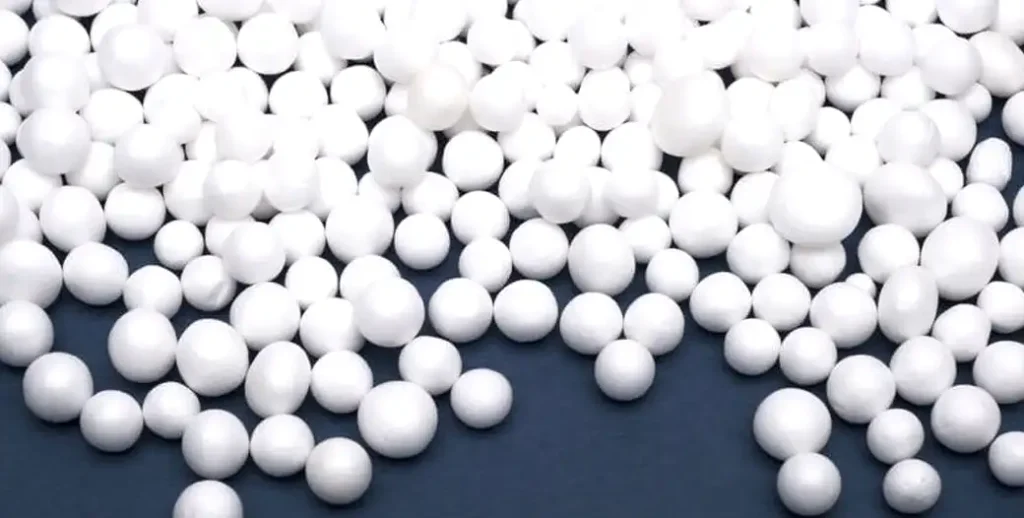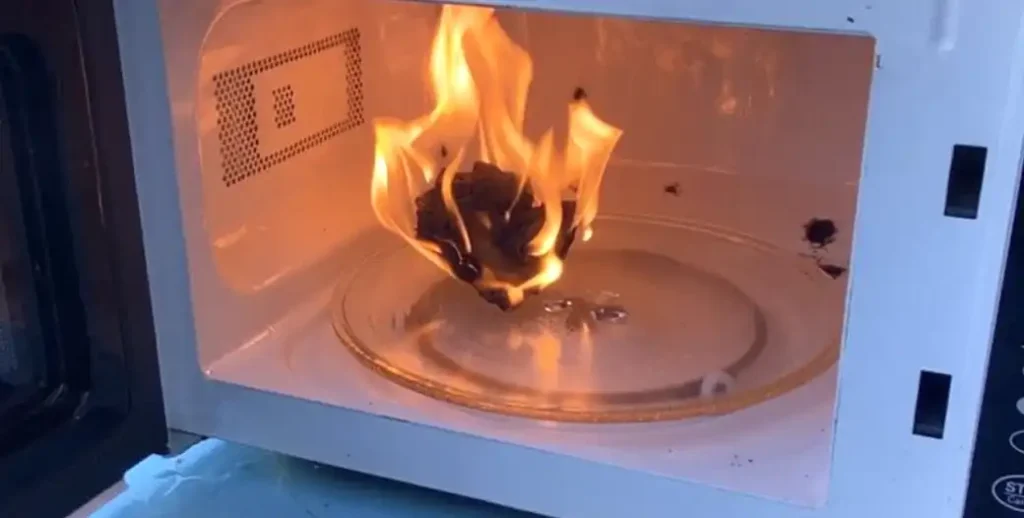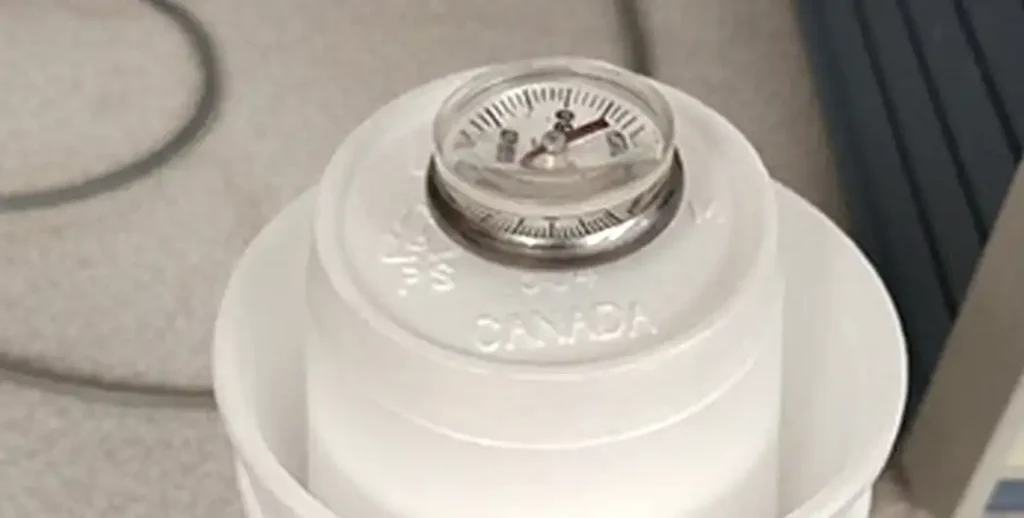Styrofoam, a widely used material in packaging and food containers, is often questioned for its safety when exposed to heat.
In this article, we’ll delve deep into the topic, answering the burning question: can you heat up styrofoam? We’ll explore the safety implications, potential risks, and eco-conscious alternatives.
What Is Styrofoam

What Is Styrofoam
Styrofoam, also known as expanded polystyrene foam (EPS), is a lightweight and versatile material used in various applications, ranging from packaging to insulation. It is composed of polystyrene beads that are expanded and molded into different shapes and forms. Styrofoam is valued for its insulating properties, making it ideal for keeping items cool or hot. However, it is important to note that Styrofoam is non-biodegradable and can have detrimental effects on the environment if not disposed of properly.
Importance of Proper Styrofoam Disposal
Proper disposal of styrofoam is crucial due to its non-biodegradable nature and environmental impact. When styrofoam is not disposed of correctly, it can persist in the environment for hundreds of years, contributing to pollution and harming wildlife.
Improperly discarded styrofoam can litter landscapes, clog waterways, and endanger marine life. By ensuring proper disposal methods, such as recycling or using designated drop-off locations, we can minimize the negative effects of styrofoam on our planet and protect ecosystems for future generations.
Can You Heat Up Styrofoam?

Exploring the safety implications of heating styrofoam reveals a multifaceted issue with significant health and environmental considerations. Styrofoam, also known as expanded polystyrene foam (EPS), is commonly used in packaging and food service products due to its lightweight and insulating properties. However, when subjected to heat, styrofoam can undergo physical and chemical changes that pose risks to both human health and the environment.
Factors Influencing Safety
Temperature Thresholds
Different types of styrofoam have varying temperature thresholds, beyond which they can melt or release harmful chemicals. It’s essential to be aware of these thresholds to avoid unintentional exposure to high temperatures.
Chemical Composition
Styrofoam is composed of polystyrene, a synthetic polymer that can release toxic chemicals when heated. These chemicals, such as styrene, have been associated with adverse health effects, including respiratory issues and potential carcinogenicity.
Microwave Use
While some styrofoam containers may be labeled as microwave-safe, microwaving styrofoam can still pose risks. The uneven heating in microwaves can cause hot spots, leading to melting or combustion of the styrofoam and the release of harmful fumes.
Risks of Heating Styrofoam
Health Hazards
The primary health risk associated with heating styrofoam is the release of toxic fumes and chemicals. Inhalation of these fumes can irritate the respiratory system and may lead to symptoms such as headaches, dizziness, and nausea. Prolonged exposure to styrene fumes can have more severe health effects, including neurological and reproductive issues.
Environmental Impact
Heating styrofoam can also have detrimental effects on the environment. Burning or melting styrofoam releases pollutants into the air, contributing to air pollution and exacerbating respiratory conditions. Additionally, improper disposal of heated styrofoam can contaminate water sources, affecting aquatic life and ecosystems.
Alternatives to Heating Styrofoam
Given the risks associated with heating styrofoam, it’s essential to explore alternative options for food heating and packaging. Reusable containers made from glass or stainless steel offer safe alternatives to styrofoam for heating food. Additionally, eco-friendly packaging materials such as compostable or biodegradable alternatives can help reduce the environmental impact of disposable packaging.
Heat Capacity of Styrofoam

The heat capacity of styrofoam, also known as its specific heat capacity, refers to the amount of heat energy required to raise the temperature of a unit mass of styrofoam by one degree Celsius. Styrofoam is a lightweight and insulating material, which means it has a relatively low heat capacity compared to other materials like metals or water.
The heat capacity of styrofoam can vary depending on factors such as its density, composition, and structure. Generally, styrofoam has a low thermal conductivity, meaning it does not conduct heat well. Instead, it acts as a barrier to heat transfer, making it effective for insulation purposes.
Due to its low heat capacity and insulating properties, styrofoam is often used in packaging materials, food containers, and insulation products. It helps to keep items cool or hot by minimizing heat transfer between the environment and the contents of the container.
While styrofoam’s low heat capacity makes it effective for insulation, it also means that it can be susceptible to melting or deformation when exposed to high temperatures. Therefore, it’s essential to consider the heat capacity of styrofoam when using it in applications where heat exposure is a concern, such as microwaving or heating food.
Does Styrofoam Absorb Heat
Yes, styrofoam absorbs heat but does so relatively slowly compared to materials with higher thermal conductivity. Styrofoam is an insulating material, which means it resists heat flow and acts as a barrier to heat transfer. When exposed to heat, styrofoam absorbs some of the thermal energy, but its low thermal conductivity limits the rate at which it absorbs heat.
The structure of styrofoam, composed of expanded polystyrene beads, creates pockets of air within the material. These air pockets trap heat and prevent it from easily passing through the styrofoam. As a result, styrofoam is commonly used in applications where insulation is required, such as packaging, food containers, and building insulation.
While styrofoam does absorb heat, its insulating properties mean that it retains heat rather than allowing it to pass through. This can be advantageous in certain situations, such as keeping food warm or cold in insulated containers. However, it’s essential to be cautious when heating styrofoam, as excessive heat exposure can cause it to melt, release harmful chemicals, or pose other safety risks.
Factors Influencing Safety
Understanding the safety of styrofoam involves considering various factors that can influence its behavior when exposed to heat or other external factors. These factors play a crucial role in determining the overall safety of using styrofoam in different applications. Let’s delve into some of the key factors:
Temperature Thresholds
One of the primary factors influencing the safety of styrofoam is its temperature thresholds. Different types of styrofoam have varying thresholds at which they can withstand heat before undergoing physical changes. Exceeding these thresholds can lead to melting, deformation, or the release of harmful chemicals.
Chemical Composition
The chemical composition of styrofoam is another critical factor to consider. Styrofoam is primarily composed of polystyrene, a synthetic polymer. When heated, polystyrene can release toxic chemicals such as styrene, which poses health risks upon inhalation or ingestion. Understanding the chemical makeup of styrofoam is essential for assessing its safety in various applications.
Type of Heating Source
The type of heating source used can also influence the safety of styrofoam. For example, microwaving styrofoam can pose additional risks due to uneven heating and the potential for hot spots. In contrast, heating styrofoam using indirect heat sources, such as ovens or steam, may offer more controlled heating conditions.
Duration of Heating
The duration of heating is another factor to consider when assessing styrofoam safety. Prolonged exposure to heat can increase the likelihood of styrofoam melting or releasing harmful chemicals. Shorter heating durations may be less likely to cause significant changes in the styrofoam’s structure or composition.
Environmental Conditions
Environmental conditions, such as humidity and atmospheric pressure, can also influence the safety of styrofoam. High temperatures combined with elevated humidity levels may accelerate the breakdown of styrofoam and increase the release of toxic fumes. Similarly, changes in atmospheric pressure can affect the behavior of styrofoam when exposed to heat.
Manufacturer Specifications
Lastly, adhering to manufacturer specifications and guidelines is crucial for ensuring the safety of styrofoam use. Manufacturers may provide recommendations for safe heating practices or specify the maximum temperature thresholds for their styrofoam products. Following these guidelines can help minimize the risks associated with using styrofoam in various applications.
Risks of Heating Styrofoam
While heating styrofoam may seem convenient, it can pose several risks to health and the environment.
Health Hazards
- Toxic Fume Emission: Heating styrofoam can release toxic fumes, including styrene, which has been linked to respiratory issues and potential carcinogenic effects.
- Chemical Leaching: High temperatures can cause styrofoam to leach harmful chemicals into food or beverages, posing health risks upon ingestion.
Environmental Impact
- Air Pollution: Burning or melting styrofoam releases pollutants into the air, contributing to air pollution and potentially exacerbating respiratory conditions.
- Water Contamination: Improper disposal of heated styrofoam can contaminate water sources, affecting aquatic life and ecosystems.
Alternatives to Heating Styrofoam
Given the risks associated with heating styrofoam, it’s essential to explore alternative options for food heating and packaging.
Eco-Friendly Alternatives
- Reusable Containers: Opt for reusable containers made from glass or stainless steel for heating food instead of styrofoam.
- Biodegradable Packaging: Choose eco-friendly packaging materials such as compostable or biodegradable alternatives to styrofoam.
FAQs
Is it safe to microwave styrofoam?
While some styrofoam containers are labeled as microwave-safe, it’s generally recommended to avoid microwaving styrofoam due to potential chemical leaching and uneven heating.
Can you recycle styrofoam?
While styrofoam is technically recyclable, it’s not accepted in curbside recycling programs due to its low density. However, specialized recycling facilities may accept certain types of styrofoam for processing.
What happens when you heat styrofoam?
Heating styrofoam can cause it to melt, release toxic fumes, and leach harmful chemicals into the surrounding environment or food.
How can I safely dispose of styrofoam?
Check with local recycling facilities for styrofoam drop-off locations or participate in styrofoam recycling programs if available in your area. Alternatively, consider reusing styrofoam packaging or seeking out businesses that accept styrofoam for recycling.
What are the dangers of inhaling styrofoam fumes?
Inhaling styrofoam fumes can irritate the respiratory system and may lead to symptoms such as headaches, dizziness, and nausea. Prolonged exposure to styrene fumes can have more severe health effects.
Are there any safe uses for styrofoam?
While styrofoam has its drawbacks, it can still be used responsibly in certain applications such as insulation and protective packaging, provided it’s not exposed to high temperatures.
Conclusion
In conclusion, while the question “can you heat up styrofoam?” may seem straightforward, the answer involves considering various safety implications and environmental concerns. It’s crucial to handle styrofoam with care, avoid heating it whenever possible, and explore eco-friendly alternatives to minimize environmental impact and protect human health.
